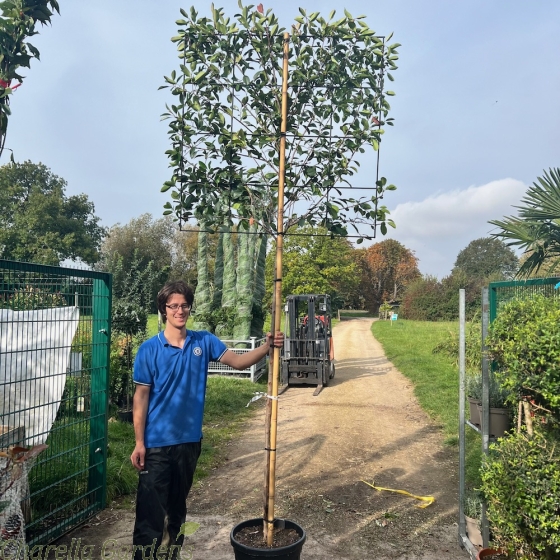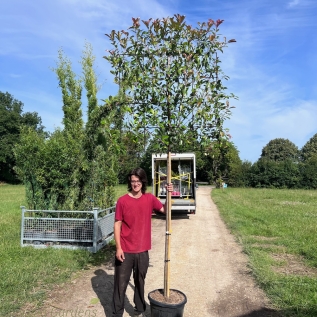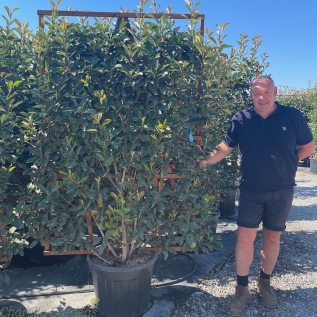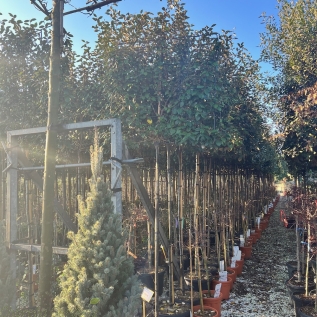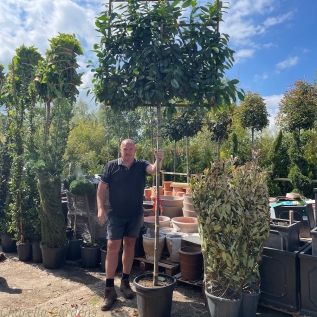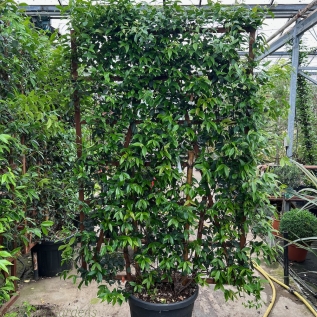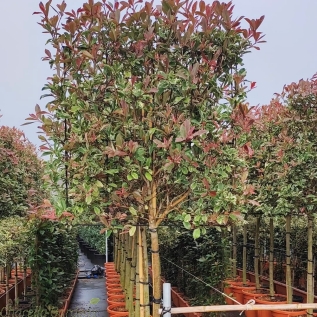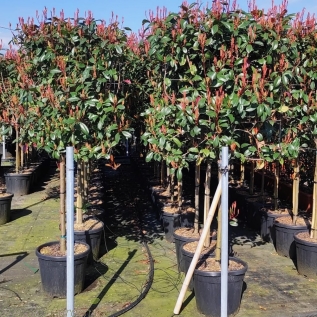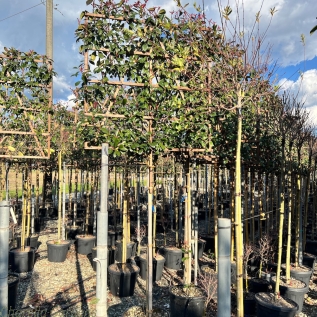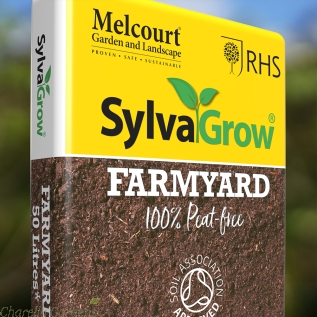Photinia are an easily maintained quick growing plant. They grow best in fertile, moist, well-drained soil in sun or partial shade in a sheltered position. The young shoots can become scorched by cold or drying winds and late frosts if grown in an exposed position. Photinia is tolerant of most soils, even clay as long as it has been improved by incorporating well-rotted compost or manure. Most Photinia require minimal pruning, however these plants have been trained into topiary standards, so to keep the heads in check they will benefit from the occasional trim. In colder UK areas try to avoid trimming after mid-August, since any new growth would be vulnerable to autumn frosts. Hard pruning, if required should be done in spring prior to the growing season starting and when the worse of the winter weather has passed.
Q) Your description says "properly maintained" my understanding was Photina are low maintenance?
A) Photinia are low maintenance but they are not maintenance free so when we mention "properly maintained," We are referring to the regular care and attention required to keep the Photinia Red Robin healthy and thriving and looking good. This includes various tasks such as pruning, watering, fertilising, and monitoring for any signs of pests or diseases.
Pruning is an essential part of maintaining the plant's shape, size, and overall appearance. It involves removing dead, damaged, or overgrown branches to promote air circulation and sunlight penetration, which aids in the plant's overall health. Regular watering, taking care not to overwater or underwater, ensures that the plant receives adequate moisture. Fertilising with a balanced fertiliser helps provide the necessary nutrients for growth and development. Monitoring for pests and diseases allows for early detection and treatment, preventing any potential damage to the plant.
By properly maintaining your Photinia Red Robin, you can ensure its longevity, health, and visual appeal
Q) When is the best time to trim?
A) The best time of year to prune Photinia Red Robin is in late winter or early spring, before new growth begins. Pruning during this time allows the plant to recover quickly and promotes healthy growth throughout the growing season. It is important to prune before the new leaves emerge so that you can shape the plant and remove any dead or damaged branches effectively. Pruning during this period also helps to maintain the desired size and shape of the plant while encouraging the development of new foliage.
Q) Is it really necessary to trim Photinia?
A) Its not an absolute must but these are not a cheap plant and we want you to get the best from them, there are several benefits to trimming:
1. Encourages new growth: Pruning stimulates the growth of new branches and foliage. By removing dead or overgrown branches, the plant can redirect its energy towards producing new, healthy growth. This promotes a fuller and more vibrant appearance.
2. Improves air circulation: Dense foliage can restrict airflow within the plant, creating a favourable environment for fungal diseases and pests. Pruning helps open up the canopy, allowing air to circulate freely. Adequate air circulation reduces the risk of diseases and keeps the plant's foliage dry, which is essential for preventing fungal infections.
3. Enhances sunlight penetration: Over time, a Photinia Red Robin may develop thick and congested branches, limiting the amount of sunlight reaching the inner parts of the plant. Pruning removes excess branches, allowing sunlight to penetrate deeper into the plant. Sufficient sunlight is crucial for photosynthesis, which fuels the plant's growth and overall vitality.
4. Shapes the plant: Pruning allows you to shape the Photinia Red Robin according to your desired form or size. It helps maintain a neat and well-maintained appearance, making it a more attractive addition to your garden or landscape.
Staking Trees
Staking may be advisable if planting in an exposed position where windrock may be an issue. Once you have dug your hole and the tree is ready to plant, place a stake at a 45-degree angle leaning back towards the support structure. Once planted, compact soil mixture around the base for extra support and water well.
Unfortunately the weight and height of these plants makes it impossible for us to deliver them by courier and can only be delivered in one of our vehicles so we cannot deliver nationwide. As a rough guide we deliver to almost all destinations south of our nursery in the Cotswolds and upto approximately Manchester and Leeds if heading north. The website will not take your order if you are outside of one of our delivery postcodes, this will be confirmed in the checkout and basket area when postcode is entered.
We may be able to deliver outside of one of our regular areas but by arrangement only. Contact us here






